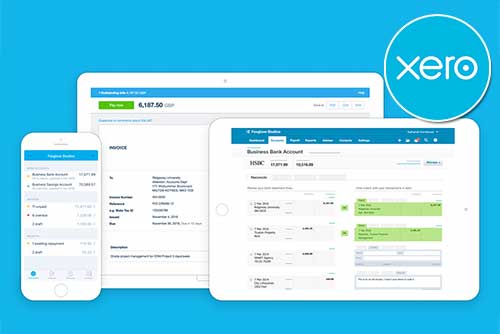Debit vs Credit Accounting: A Comprehensive Guide
The terms ‘debit’ and ‘credit‘ are more than just banking jargon. Debit vs credit accounting play a pivotal role in maintaining the balance of a business’s books. Understanding the dynamics of debits and credits is crucial for any business owner. It’s not just about recording transactions, but about comprehending how each entry impacts your asset, liability, equity, revenue, and expense accounts. Let’s unravel the mystery of debits vs credits in accounting.
What Is a Debit?
A debit, often abbreviated as DR, is an entry that signifies an increase in an asset or expense account, or a decrease in a liability or equity account. This is contrary to the common understanding of a debit, where money is deducted from an account.
The term ‘debit’ is derived from the Latin word ‘debere’, which means ‘to owe’. In the double-entry bookkeeping system, debits are always entered on the left side of the ledger. This is a key aspect of debit vs credit, as credits are recorded on the right side. The balance of these two sides is what keeps your book in check.
Debits can increase the balance of asset or expense accounts, such as an inventory account, and decrease liability equity accounts, like a loan payable account. This is because an increase in assets or expenses is usually a result of business operations that bring money in, while a decrease in liabilities means the company owes less money.
What is a Credit in Accounting?
A credit an entry made on the right side of an account, hence the term ‘right side’ often used interchangeably with credit. This entry can either increase a liability, equity, or revenue account or decrease an asset or expense account.
For instance, if you’re running a business and you purchase inventory on credit, you would credit your inventory account. This is because the inventory, an asset, has increased. However, you would also have to debit your payable account, a liability, as you now owe money to your supplier.
How Are Debits vs Credits Accounting Transactions Recorded?
Debits and credits are the fundamental elements that make up the double-entry system. This system is recorded in the general ledger of a business, which is essentially a complete record of all financial transactions over a certain period. Today, the majority of bookkeepers and business owners use accounting software to record these debits and credits, a far cry from the days of paper ledgers where transactions were manually written out.
The process of recording debits and credits is done through journal entries. In a standard journal entry, all debits are listed on the top lines, while all credits are listed on the line below the debits. This is a crucial aspect of the trial balance and adjusted trial balance, ensuring that all entries balance out. In essence, the total dollar amount of all debits must equal the total dollar amount of all credits, ensuring financial balance.
The concept of debits and credits can be visualised using T-accounts, a graphic representation of a ledger account. In a T-account, a debit is placed on the left side of the chart, while a credit is on the right side. This system is used to ensure that the value of all debits and credits are equal, maintaining the balance of the company’s finances.
Debit and Credit Journal Entry Examples
Here are a few examples of how debit and credit journal entries are recorded in the world of accounting:
- Purchase of New Equipment: When a business buys new equipment worth £10,000, it would debit its equipment account by £10,000, indicating an increase in assets. Simultaneously, it would credit its bank account by £10,000, showing a decrease in assets.
- Increase in Liability: Suppose a business borrows £5,000 from a bank. The business would debit its cash account by £5,000, showing an increase in assets. It would also credit its liability account by £5,000, indicating an increase in liability.
In each of these examples, the total amount of debits equals the total amount of credits, maintaining the balance in the accounting equation.
Debit and Credit Examples in Different Accounts
In this section, we’ll explore various debit and credit examples across different accounts. We’ll delve into the intricacies of asset, liability, and equity accounts, and how debit and credit entries affect each one. This will provide a comprehensive understanding of how these entries impact the general ledger, a crucial aspect of maintaining accurate financial records.
Whether it’s an asset or expense account, or a liability, equity or revenue account, the side of an account that a debit or credit entry is recorded on can significantly influence the account’s balance. Let’s dive in.
Debit and Credit Examples in Asset Accounts
Let’s delve into some examples of debit and credit entries in asset accounts:
- Cash Purchase: When a business buys a computer worth £1,200 in cash, it records a debit entry of £1,200 in the equipment account (an asset account), and a credit entry of £1,200 in the cash account (another asset account). The debit entry increases the equipment account, while the credit entry decreases the cash account.
- Inventory Purchase on Credit: If a hardware store purchases inventory worth £2,000 on credit, it records a debit entry of £2,000 in the inventory account (an asset account), and a credit entry of £2,000 in the accounts payable account (a liability account). The debit entry increases the inventory account, while the credit entry increases the liability account.
- Equipment Depreciation: An IT company documenting the annual depreciation of its computer equipment, worth £3,000, records a debit entry of £3,000 in the depreciation expense account (an expense account), and a credit entry of £3,000 in the accumulated depreciation account (a contra-asset account). The debit entry increases the expense account, while the credit entry increases the contra-asset account.
These examples illustrate how debit and credit entries can increase or decrease an asset account, depending on the nature of the transaction. It’s crucial to understand the impact of these entries on the general ledger to maintain accurate financial records.
Debit and Credit Examples in Liability Accounts
Let’s delve into some examples of debit and credit entries in liability accounts.
- Loan Payable Account: When a business secures a loan, the cash account (an asset account) is debited, indicating an increase in assets. Simultaneously, the Loans Payable account (a liability account) is credited, reflecting the increase in liabilities. This is a classic example of a credit journal entry in a liability account.
- Accounts Payable Account: Suppose a business purchases goods on credit. The inventory account (an asset account) is debited, showing an increase in assets. Concurrently, the Accounts Payable account (a liability account) is credited, signifying the obligation to pay the supplier in the future.
- Interest Payable Account: When a business accrues interest on a loan, the interest expense account is debited, and the Interest Payable account (a liability account) is credited. This entry increases the liability of the business.
These examples illustrate how debit and credit entries work in liability accounts. The key takeaway is that a credit increases a liability account, while a debit decreases it. Understanding this fundamental principle is crucial for maintaining an accurate general ledger.
Debit and Credit Examples in Equity Accounts
In the realm of equity accounts, the interplay between debits and credits can be illustrated through a few examples:
- Common Stock: When a company issues shares, it credits the Common Stock account, increasing the equity. Conversely, if the company buys back its shares, it debits the Common Stock account, reducing the equity.
- Retained Earnings: Profits earned by the company increase the Retained Earnings account. This is done by crediting the account. However, if the company incurs a loss or pays dividends, it debits the Retained Earnings account, decreasing the equity.
- Dividends: When a company declares dividends, it debits the Dividends account, reducing the equity. The payment of dividends is a distribution of earnings, not an expense.
The Impact of Debits and Credits on Financial Statements
The balance sheet is influenced by debit and credit entries in a unique way. When a debit entry is made to an asset account, it increases the value of that account. Conversely, a credit entry to an asset account decreases its value. This is crucial when recording transactions such as the purchase of a fixed asset, where a debit entry increases the value of the asset account.
Liability and equity accounts behave in the opposite manner. A credit entry to a liability or equity account increases its value, while a debit entry decreases it. This is evident when a company incurs a liability or increases its revenue, resulting in a credit entry to the respective liability or revenue account. Understanding these dynamics is key to maintaining accurate financial records.
The income statement, a crucial financial document, is significantly influenced by debit and credit entries. It’s a report that outlines a company’s revenues, expenses, and profits or losses over a specific period. The interplay between debit and credit entries directly impacts these figures.
For instance, when a debit entry is made in an expense account, it increases the expense for the company, thereby reducing the net income. Conversely, a credit entry in a revenue account increases the company’s income. It’s essential to remember that the income statement is directly linked to the company’s profitability. Therefore, the correct application of debit and credit rules is vital.
Wrapping Up Debit vs Credit Accounting
Understanding the concept of debit and credit in accounting is crucial for maintaining accurate financial records. It’s the backbone of the double-entry bookkeeping system.
For every debit entry, there should be a corresponding credit entry of equal value. This balance ensures that the accounting equation (Assets = Liabilities + Equity) holds true, providing a clear picture of a company’s financial health.
With this knowledge, you can confidently navigate your financial landscape, making informed decisions that drive your business forward.
Need an accountant?
About the Author
Lucy Cohen, our Co-Founder at Mazuma, is a passionate innovator dedicated to revolutionising the accountancy industry. Over her 21-year career, including 18 years at Mazuma, Lucy has become an industry expert, contributing regularly to trade publications like Accounting Web and authoring acclaimed books such as “The Millennial Renaissance” and “Forget the First Million.” Her accolades include the Director of the Year (Innovation) by the Wales Institute of Directors and the Outstanding Contribution Award at the Accounting Excellence Awards.






















